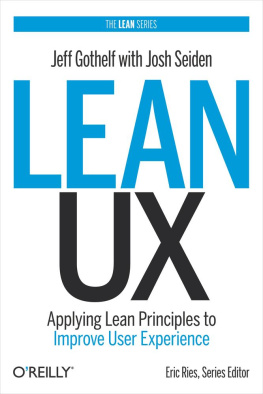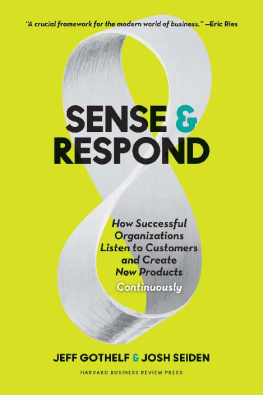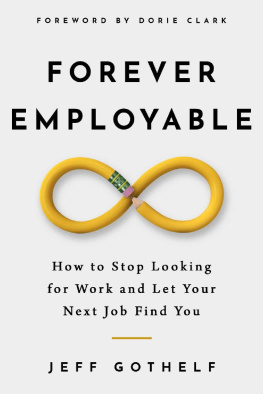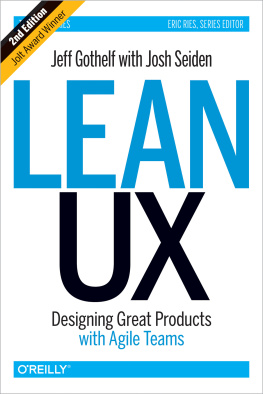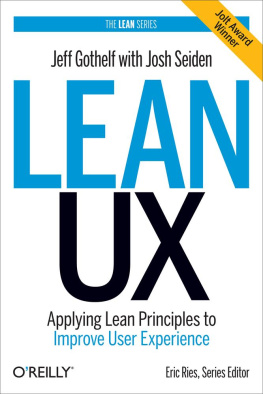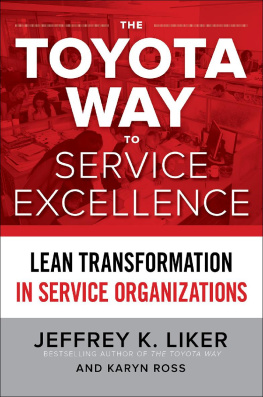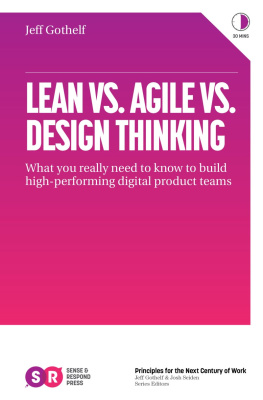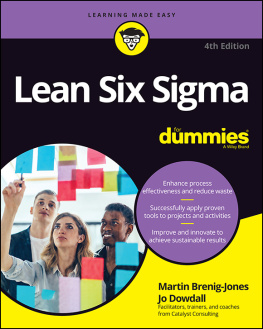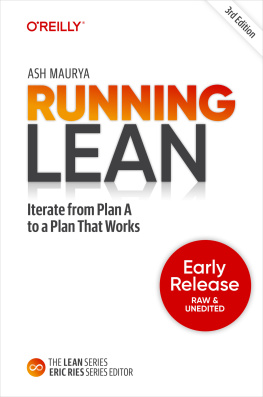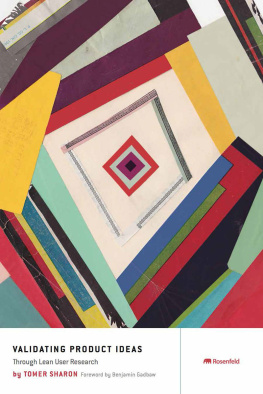Lean UX: Applying Lean Principles to Improve User Experience
Jeff Gothelf
Beijing Cambridge Farnham Kln Sebastopol Tokyo
For Carrie, Grace, and Sophie
Special Upgrade Offer
If you purchased this ebook directly from oreilly.com, you have the following benefits:
DRM-free ebooksuse your ebooks across devices without restrictions or limitations
Multiple formatsuse on your laptop, tablet, or phone
Lifetime access, with free updates
Dropbox syncingyour files, anywhere
If you purchased this ebook from another retailer, you can upgrade your ebook to take advantage of all these benefits for just $4.99. to access your ebook upgrade.
Please note that upgrade offers are not available from sample content.
Praise for Lean UX
Customer Development and Lean Startup changed the way businesses are built, because even the smartest teams cant predict market and user behavior. This book brings both methodologies to UX so you can build cheaper, faster, andmost importantlybetter experiences.
Alex OsterwalderAuthor and Entrepreneur; Cofounder, Business Model Foundry GmbH
Many UX designers I know fear the words Agile or Lean out of fear that they threaten their creative process and lower the quality standards of their work. But with more and more software development teams adopting these methodologies, its important that the UX team embrace this change and find ways to use the system to its advantage. In this book, Jeff Gothelf and Josh Seiden explain what Lean UX is, why you should practice it, and how it can help you and your team build better products (which is what its all about, right?). Using these principles, the RunKeeper team has broken down the traditional barriers between engineering and UX and has made everyone responsible for creating an incredible user experience.
Tom BoatesVP, User Experience, RunKeeper
There is a revolution afoot. It is the move away from big design up front and isolated, specialized teams throwing documents over the wall to each other. Applying the principles of Lean startups, Jeff and Josh lay out the principles of Lean UX, which can literally transform the way you bring experiences to life. I have firsthand experience applying their wisdom and am excited about taking Agile to the next level. Get this book. But most importantly, put this book into practice.
Bill ScottSr. Director, User Interface Engineering, PayPal, Inc.
If youre looking to deliver great experiences with Agile development methods, get this book! Jeff and Josh share proven methods for creative ideation, planning, and problem-solving without heavy deliverable baggage.
Christian CrumlishDirector of Product, CloudOn
While there is no question that great product teams must put user experience design front-and-center, many teams have struggled to reconcile the techniques and objectives of user experience design with the rhythm and pace of modern Agile development teams. Lean UX is the collection of techniques and mindset that I advocate to modern product teams that know they need the benefits of both.
Marty CaganFounder, Silicon Valley Product Group; Former SVP Product and Design, eBay
Jeff and Joshs passion for getting UX (and really all of product development) right comes across powerfully in this detailed yet eminently readable book. The case studies, examples, and research serve to highlight the power of building a Lean UX process, and theres a great deal of actionable advice taken from these. Im ordering a copy for everyone on our design, UX, and product teams at Moz.
Rand FishkinCEO and Cofounder, Moz
A fantastic combination of case studies and practical advice that your team can use today. Whether youre at a startup or a Fortune 500 company, this book will change the way you build products.
Laura KleinPrincipal, Users Know
Lean UX provides a prescriptive framework for how to build better products, moving design away from pixel perfection for the sake of it, toward iterative learning, smarter effort, and outcome-based results. Product managers, business owners, and startup employeesalong with designerscan benefit greatly from Lean UX.
Ben YoskovitzVP Product, GoInstant
Foreword
In reading Lean UX , youre about to embark on a tour of a new way of working. For those of us steeped in traditional management techniques, it may seem a little disorienting. I sometimes like to imagine what it would be like to have a birds-eye view of the typical modern corporation. From on high, you could examine each silo of functional excellence one at a time. See them in your minds eye: Marketing, Operations, Manufacturing, IT, Engineering, Design, and on and on in a tidy row of crisp, well-run silos.
Lets imagine you reached down to grab one of these silos and popped its top off to see inside. What would you see? This being a modern company, youd see each silo designed for maximum efficiency. To achieve this efficiency, youd likely find a highly iterative, customer-centric approach to problem solving. In Manufacturing, youd encounter traditional lean thinking. In Engineering or IT, perhaps some variation on agile development. In Marketing, customer development. In Operations, DevOps. And of course in Design, the latest in design thinking, interaction design, and user research techniques.
Zooming back out to our high perch, we might be forgiven for thinking This company uses a variety of rigorous, hypothesis-driven, customer-centric, and iterative methodologies. Surely, it must be an extremely agile company, capable of reacting quickly to changes in market conditions and continuously innovating! But those of us who work in modern companies know how far this is from the truth.
How is it possible that our departmental silos are operating with agility, but our companies are hopelessly rigid and slow? From our far-off vantage point, we have missed something essential. Although our departments may value agility, the interconnections between them are still mired in an antiquated industrial past.
Consider just one example, which I hope will sound familiar. A company decides it must innovate to survive. It commissions a design team (either in-house or external) to investigate the future of its industry and recommend innovative new products that could secure its future. A period of great excitement commences. Customers are interviewed, observed, analyzed. Experiments, surveys, focus groups, prototypes and smoke tests follow one after the other. Concepts are rapidly conceived, tested, rejected, and refined.
And what happens at the end of this process? The designers proudly presentand the businesses enthusiastically celebratesa massive specification document with their findings and recommendations. The iteration, experimentation, and discovery ceases. Now engineering is called upon to execute this plan. And although the engineering process may be agile, the specification document is rigidly fixed. What happens if the engineers discover that the specification was unworkable or even slightly flawed? What if the concepts worked great in the lab but have no commercial appeal? What if market conditions have changed since the original learning took place?

